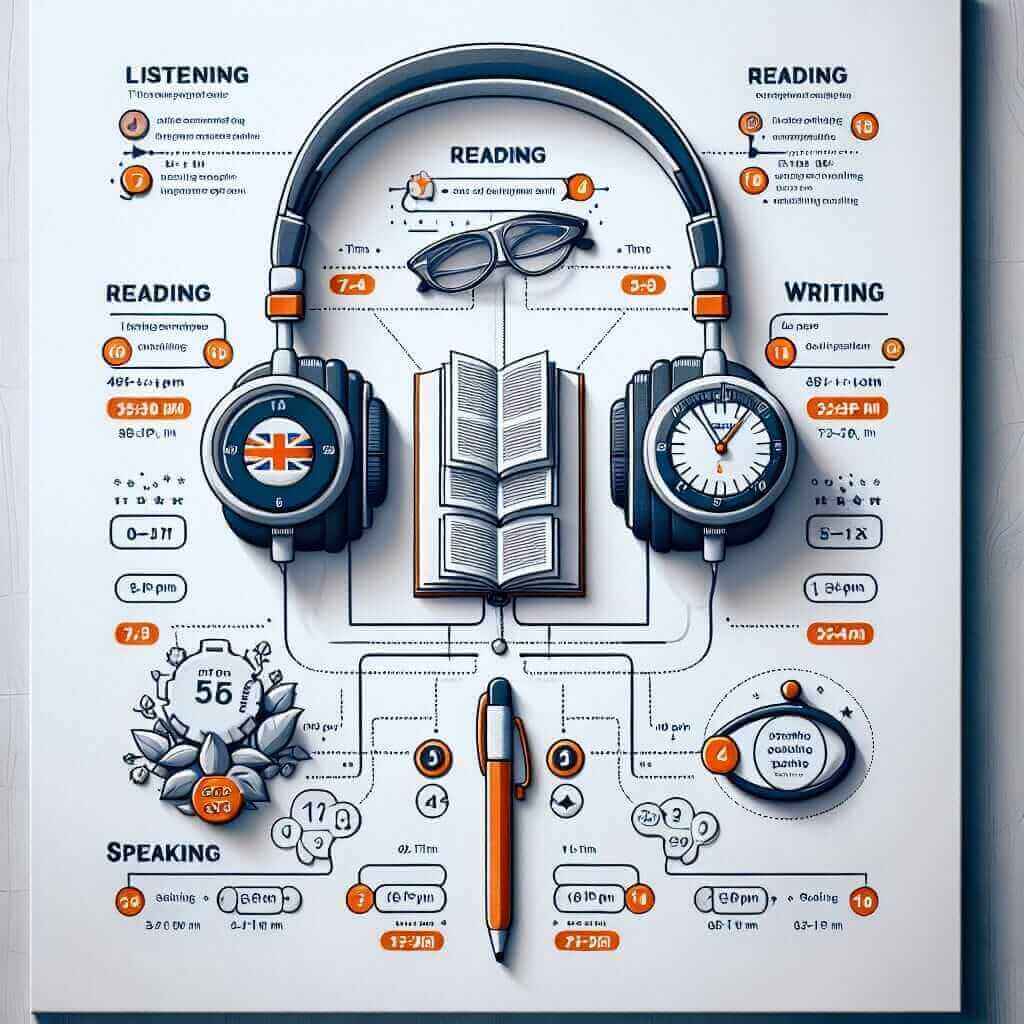The IELTS exam, or International English Language Testing System, is a globally recognized test that measures your ability to communicate in English. Whether you dream of studying abroad, migrating to an English-speaking country, or simply enhancing your career prospects, understanding the IELTS exam structure is crucial for success. This comprehensive guide delves into the intricacies of the IELTS exam format, equipping you with the knowledge to confidently approach each section.
Understanding the IELTS Exam Structure
The IELTS exam comprises four sections: Listening, Reading, Writing, and Speaking. These sections assess your proficiency in different aspects of the English language.
Listening Section
The Listening section evaluates your ability to comprehend spoken English. It includes four audio recordings of native English speakers in various everyday situations, such as conversations, lectures, and announcements.
Example:
- You might hear a conversation between two friends discussing their weekend plans, followed by a lecture on the history of photography.
Key Points:
- You will hear each recording only once.
- Various question types are used, including multiple choice, sentence completion, and diagram labeling.
Reading Section
The Reading section assesses your reading comprehension skills. You will be presented with three long texts on academic topics from books, journals, magazines, and newspapers.
Example:
- One text might discuss the impact of social media on communication, while another explores the benefits of renewable energy.
Key Points:
- You need to understand the main ideas, supporting details, and writer’s opinions presented in the texts.
- Questions include multiple choice, identifying information, matching headings, and completing summaries.
Writing Section
The Writing section evaluates your ability to express yourself in written English. It consists of two tasks:
-
Task 1: You will describe, summarise, or explain visual information presented in a graph, chart, table, or diagram.
- Example: You might be asked to describe the trends in global smartphone sales over a five-year period based on a line graph.
-
Task 2: You will write an essay in response to a given opinion, argument, or problem.
- Example: An essay question might ask you to discuss the advantages and disadvantages of online learning compared to traditional classroom learning.
Key Points:
- You will be assessed on your grammar, vocabulary, coherence, and ability to present a clear and well-structured argument.
Speaking Section
The Speaking section assesses your ability to communicate effectively in spoken English. It involves a face-to-face interview with a certified IELTS examiner.
Example:
- The examiner might ask you about your hobbies, future aspirations, or opinions on current events.
Key Points:
- The Speaking test is divided into three parts: introduction and interview, individual long turn, and two-way discussion.
- You will be evaluated on your fluency, pronunciation, grammatical range, and vocabulary.

Common Mistakes to Avoid
- Not managing time effectively: Each section of the IELTS exam has a time limit, so it’s crucial to practice time management beforehand.
- Ignoring instructions: Pay close attention to the instructions for each task, as failing to follow them can negatively impact your score.
- Using informal language in Writing Task 2: Remember to maintain a formal tone and avoid colloquialisms or slang in your essay.
Tips for IELTS Success
- Start Early: Begin your preparation well in advance to allow ample time for practice and improvement.
- Familiarise Yourself with the Exam Format: Understanding the structure and question types of each section is crucial for success.
- Practice Regularly: Take mock tests under timed conditions to simulate the real exam experience and identify areas for improvement.
- Enhance Your Vocabulary and Grammar: Expand your vocabulary and work on improving your grammatical accuracy to effectively communicate your ideas.
Conclusion
By understanding the IELTS exam structure and following the tips outlined in this guide, you can feel confident and well-prepared for test day. Remember that consistent effort, focused practice, and a strategic approach are key to achieving your desired IELTS score. Good luck!